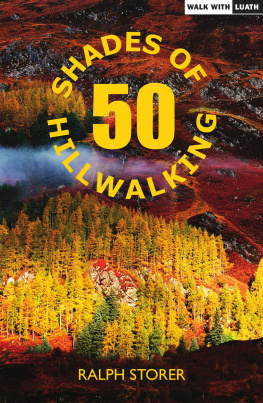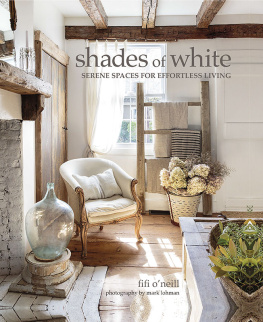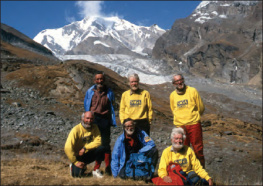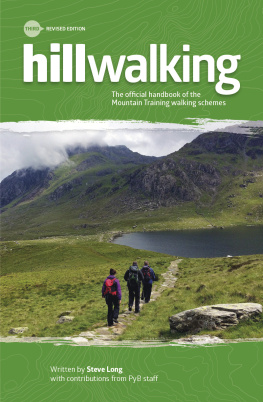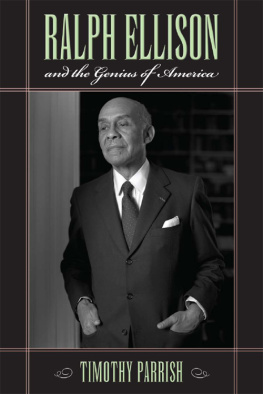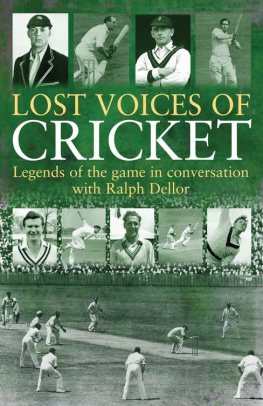RALPH STORER is an experienced hillwalker who has hiked extensively around the world. Despite being a Sassenach by birth, he has lived in Scotland since studying psychology at Dundee University and has a great affinity for the Highlands. As well as disappearing into the hills for a regular fix of nature, he also writes novels and sexological non-fiction, and produces darkwave music on his home computer.
By the same author:
100 Best Routes on Scottish Mountains (Warner Books, 2013)
50 Best Routes on Skye and Raasay (Birlinn, 2012)
Exploring Scottish Hill Tracks: An Illustrated Route Guide for Walkers and Mountain Bikers (Warner Books, 1998)
The Joy of Hillwalking (Luath Press, 2004)
Mountain Trivia Challenge (Menasha Ridge Press, 1995)
The Rumpy Pumpy Quiz Book (Metro Publishing, 2003)
Love Scenes (a novel) (Mercat Press, 2004)
50 Classic Routes on Scottish Mountains (Luath Press, 2005)
The Ultimate Guide to the Munros, Volume 1: The Southern Highlands (Luath Press, 2014)
The Ultimate Guide to the Munros, Volume 2: Central Highlands South (Luath Press, 2011)
The Ultimate Guide to the Munros, Volume 3: Central Highlands North (Luath Press, 2011)
The Ultimate Guide to the Munros, Volume 4: Cairngorms South (Luath Press, 2012)
Baffies Easy Munro Guide, Volume 1: Southern Highlands (Luath Press, 2012)
Baffies Easy Munro Guide, Volume 2: Central Highlands (Luath Press, 2012)
The Ultimate Mountain Trivia Quiz Challenge (Luath Press, 2013)
50
Shades of Hillwalking
RALPH STORER

Luath Press Limited
EDINBURGH
www.luath.co.uk
First published 2014
ISBN : 978-1-910021-65-1
ISBN (EBK): 978-1-910324-44-8
Versions of 32 have previously appeared in TGO magazine, 39 in The Scotsman newspaper, 40 in The Herald newspaper, 46 and 49 in Country Walking magazine, and 50 in The Angry Corrie .
The authors right to be identified as author of this book under the Copyright, Designs and Patents Act 1988 has been asserted.
Text and photographs Ralph Storer 2014
CONTENTS
SIREN CALL
An Eerie Moan
I BLAME THE music master, but not because he nearly killed me. If it wasnt for him, I might not have discovered mountains when it mattered. I was an east coast boy. I reached my teenage years without ever having seen a hill higher than a Lincolnshire Wold.
I dont know why a music teacher with no leadership skills or qualifications would decide (or be allowed) to take a bunch of spotty adolescent schoolboys up Snowdon in the middle of February. Even more puzzling, I dont know why Dave and I would decide to join his little group. Or why my parents would fork out the princely sum of 14 to cover the weeks train, coach and living expenses, and equip me with boots, anorak and overtrousers from the Army and Navy Stores.
Yet, in the winter of 1961, Dave and I and the music master and several schoolmates set out from Llanberis Youth Hostel to climb the path beside the Snowdon railway. We had no ice axes or crampons. I wouldnt even have known what these were. In any case, cloud obscured the summit and hid the snowbound upper slopes, which offered the prospect of an once-in-a-lifetime slide down over the crags of Clogwyn dur Arddu. We were blissfully unaware of the many accidents, some of them fatal, which had occurred here.
At Clogwyn Station we reached the base of the cloud and the first flush of snow, at which point the music master informed us that his boots were too worn to continue. Anyone who wished to climb the last 500 yards to the summit was at liberty to do so while the rest waited. Three of us took up the challenge myself, Dave and a schoolmate from another class whose name I no longer remember.

Three came back just (author in centre)
Within a short distance the path disappeared, to be replaced by a smooth snow bank that angled up to our left and fell away into the mist on our right. Only a thin line of shallow footprints hinted at the route onwards. In our innocence, we sat on the snow bank, stamped our heels into the footprints and continued to inch summit-wards with crablike movements. My thin nylon anorak soon became a wet rag and my even thinner nylon overtrousers were ripped apart by the wind, but the swirling cloud made us unaware of the abyss below our feet and the danger we were in.
I still recall the moment that our schoolmate lost his footing and began to slide away from us. By chance, before he gathered speed, his boot caught on a protruding pebble and his flailing hands managed to indent the snow sufficiently to gain purchase. He gasped. Dave and I held our breath. We were good boys and didnt swear.
Somehow, the boy wormed his way back up beside us and the precariousness of our position finally dawned on us. We retreated, in earnest silence, with infinitely more caution than we had ascended. At Clogwyn Station the music master and his party merely greeted us with impatience and set off down the path at a clip.
We three were unscathed but, as I descended, I began to lag behind. I clung gamely to my torn overtrousers, which blew out horizontally from my waist. My mother would surely be angry if I returned without them. She was a good knitter and could probably mend them. I was soaked to the skin and unable to stop shivering. Yet I seemed not to mind. On the contrary, I began to feel curiously light-headed. I now realise, of course, that I was suffering from incipient exposure.
The music master eventually noticed my sluggishness and waited for me to rejoin the group. I remember nothing of the remainder of the descent. In the following days we climbed other hills below the snowline, and I remember little of those too. Yet that experience on Snowdon has stayed with me over the years. In fact, for some reason, perhaps the same mysterious reason that makes others want to climb mountains too, it even whetted my appetite for more.
I arrived home to find my family bickering over the quickest way to get from one location in town to another. It was a not unusual scenario. Who cared? Didnt they know about mountains? I retired to my room. I was 14 years old, so I cried.
In those days the YHA produced small walking guides called log books. The Snowdon Log cost me two shillings (10p), a not inconsiderable chunk of pocket money, but I had to have it. It included a passage from H.V. Mortons book In Search of Wales , which both encapsulated my feelings and fired my imagination: The mist moved thickly and the wind came over the top of Snowdon to an eerie moan.
I had heard that eerie moan. It was a siren call.
A Bump Too Far
THE GRASSY RIDGE curved down from summit to base in a single great arc, undulating over a series of bumps before fanning out steeply below a prominent shoulder. I eyed that shoulder greedily. It hung in the sky, perhaps 500ft above me. Surely there was time?
My family had stopped for lunch beside the stream that wound around the foot of the ridge. It was 12 oclock. It was always 12 oclock because my aunt had diabetes and needed sustenance at that time. For several years, a weeks holiday in a caravan site in the Lake District was an annual ritual for my extended family.
Lunch would take at least an hour. My mother had yet to begin making the ham sandwiches. My father had yet to light the stove to boil the water for the tea. Younger relations had not yet decided where to start building their dam across the stream.

